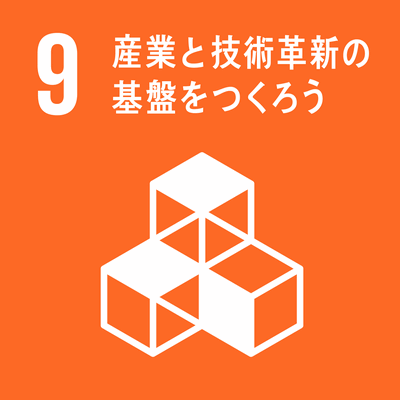シラバス表示
シラバスの詳細な内容を表示します。
→ 閉じる(シラバスの一覧にもどる)
科目の基本情報
| 開講年度 | 2024 年度 | |
|---|---|---|
| 開講区分 | 工学研究科(博士前期課程)分子素材工学専攻/応用化学専攻 | |
| 領域 | 主領域 : E; 副領域 : F | |
| 受講対象学生 |
大学院(修士課程・博士前期課程・専門職学位課程) : 2年次 |
|
| 選択・必修 | 講座必修 |
|
| 授業科目名 | 材料物理化学演習Ⅱ | |
| ざいりょうぶつりかがくえんしゅうに | ||
| Seminar in Materials Physical Chemistry II | ||
| 単位数 | 2 単位 | |
| ナンバリングコード | EN-PHCH-5
|
|
| 開放科目 | 非開放科目 | |
| 開講学期 |
前期 |
|
| 開講時間 |
金曜日 1, 2, 3, 4時限 |
|
| 授業形態 |
対面授業 * 状況により変更される可能性があるので定期的に確認して下さい
「オンライン授業」・・・オンライン会議ツール等を利用して実施する同時双方向型の授業 |
|
| 開講場所 | 決まり次第Moodle、メール等で連絡します。 | |
| 担当教員 | 小塩 明(工学研究科応用化学専攻) | |
| KOSHIO, Akira | ||
| SDGsの目標 |
|
|
| 連絡事項 | * 状況により変更される可能性があるので定期的に確認して下さい |
|
学修の目的と方法
| 授業の概要 | ナノ物質はナノメートルサイズの構造に起因する特異な物性を発現することが、⽇進⽉歩で発⾒と解明されてきている。本授業では主にナノカーボン物質(カーボンナノチューブ、グラフェン、フラーレンなど)の量⼦論的物性に関する最新の外国語論⽂を精読し、その内容を徹底的に調査・理解する。その調査結果をまとめ、発表・ディスカッションを⾏う。この授業では、このような⼀連の流れを繰り返すことによって、ナノ物質の物性や分析・評価⽅法に関する知識の習得ならびに明快な発表能⼒、ディスカッション能⼒を養うことを⽬的 とする。 (Course description/outline) It has been discovered and clarified that nanomaterials exhibit unique physical properties due to nanometer-sized structures. In this course, you will carefully read the latest foreign-language paper on the quantum physical properties of nanocarbon materials (carbon nanotubes, graphene, fullerenes, etc.) and thoroughly investigate and understand the contents. You summarize the survey results and make presentations and discussions. The purpose of this course is to obtain knowledge on the physical properties and analysis / evaluation methods of nanomaterials as well as cultivate clear presentation and discussion skills by repeating such a series of flows. |
|---|---|
| 学修の目的 | ナノ物質の分析・評価あるいは、デバイスやセンサーなど様々な材料への応⽤を検討する際に有⽤となる、基礎物性と最新の研究例・実⽤例を知識として習得する。そして、課題の徹底した調査能⼒、それを要領よくまとめるテクニック、明快な発表能⼒を⾝につける。 (Learning objectives) To learn basic physical properties and the latest research examples and practical examples that are useful when analyzing/evaluating nanomaterials or examining applications to various materials such as devices and sensors. You will also have the ability to research issues thoroughly, the techniques to summarize them in a simple manner, and the ability to make clear presentations. |
| 学修の到達目標 | ①ナノ物質の物性の基礎を理解し、最新の研究内容と関連付ける。 ②論⽂内容を明快に発表し、ディスカッションに積極的に参加する。 (Achievements) (1) Understand the basics of physical properties of nanomaterials and relate them to the latest research contents. ② Present the contents of the paper clearly and actively participate in discussions. |
| ディプロマ・ポリシー |
|
| 成績評価方法と基準 | 出席、外国語論⽂の理解度、発表の明快さ、ディスカッションへの参加の積極性 (Grading policies and criteria) Attendance, understanding of foreign language papers, clarity of presentation, active participation in discussions |
| 授業の方法 | 演習 |
| 授業の特徴 |
問題自己設定型PBL プレゼンテーション/ディベートを取り入れた授業 その他、能動的要素を加えた授業(ミニッツペーパー、シャトルカードなど) 教員と学生のやり取りは日本語でも、英語による論文や教材の講読を含んだ授業 |
| 授業アンケート結果を受けての改善点 | 最新の文献などを参照し、創造性および独自性のある研究、時代の流れを踏まえた研究活動へとつなげられ、学会発表などが可能となるようにすることを絶えず念頭におく。 (Ideas for improving classes) Always keep in mind that it is possible to refer to the latest literature, etc., to conduct research with creativity and originality, to conduct research activities based on the trend, and to make presentations at conferences. |
| 教科書 | |
| 参考書 | 授業中に紹介する。 (Reference materials) Introduce during this class. |
| オフィスアワー | 随時、総合研究棟Ⅰ205室(事前にメールで確認すること。) (Office hour) Open at any time, Room 205 in the General Research Building I Please make an appointment by e-mail in advance. |
| 受講要件 | 特になし。 (Prerequisites) N/A |
| 予め履修が望ましい科目 | 材料物理化学演習Ⅰ (Courses encouraged to take in advance) Seminar in Materials Physical Chemistry I |
| 発展科目 | |
| その他 |
英語対応授業である。 (This course is English-supported.) |
授業計画
| MoodleのコースURL |
https://moodle.mie-u.ac.jp/moodle35/course/view.php?id=18770 |
|---|
| キーワード | 量⼦化学、量⼦⼒学、カーボンナノチューブ、ナノワイヤー、ナノ粒⼦、デバイス、センサー |
|---|---|
| Key Word(s) | Quantum Chemistry, Quantum Mechanics, Carbon Nanotubes, Nanowires, Nanoparticles, Devices, Sensors |
| 学修内容 | Ⅰ. 外国語論⽂の読解・発表に関する内容 1. 最新のナノ物質の物性に関する⽂献の検索 最新のナノ物質の物性に関する⽂献を⼊⼿する。 2. 論⽂の精読 全⽂和訳をする。専⾨⽤語や知識不⾜により理解できない基礎的事項に関しては、教科書、専⾨書等を参考に、⼈に説明できるまで徹底して理解するよう努める。 3. 参考⽂献の検索・調査 過去の論⽂や特許を検索・調査し、当該論⽂のより深い理解に努める。 4.論⽂のまとめ 発表のためのレジュメを作成する。単なる和訳ではなく、論⽂内容の本質と有益な情報を盛り込んだ、明快なまとめ⽅を習得する。 5.論⽂の発表 ⼈に納得してもらうための分かりやすい発表の仕⽅を習得する。発表者以外の者は、疑問点・アイデア等、意⾒を積極的に発⾔しディスカッション能⼒を磨く。 Ⅱ. 知識として習得したい内容 電界効果トランジスタ、量⼦効果デバイス、電界電⼦放出、気体センサー、光素⼦ (Course contents) Ⅰ. Content related to reading and presenting foreign papers 1. Search for literature on the latest physical properties of nanomaterials Obtain the latest literature on the physical properties of nanomaterials. 2. Detailed reading of the paper Perform full-text Japanese translation. For basic matters that cannot be understood due to technical terms or lack of knowledge, try to thoroughly understand textbooks and specialized books until they can be explained to others. 3. Reference search Search and research past papers and patents, and strive for a deeper understanding of these papers. 4.Summary of the paper Create a resume for the presentation. To learn not only a Japanese translation but also a clear way to summarize the essence of the paper and useful information. 5. Paper presentation Learn how to make presentations that are easy for people to understand. Anyone other than the presenter actively speaks out opinions, such as questions and ideas, and refines the discussion ability. Ⅱ. Contents to be acquired as knowledge Field effect transistor, quantum effect device, field emission, gas sensor, optical element |
| 事前・事後学修の内容 | 英文をただ訳すだけではなく、何が書いてあるのかを理解すること、さらに自分で使える生きた知識とすること。 (Contents for pre and post studies) Understanding what is written, not just translating English sentences. And make it a living knowledge that you can use yourself. |
| 事前学修の時間:120分/回 事後学修の時間:60分/回 |
